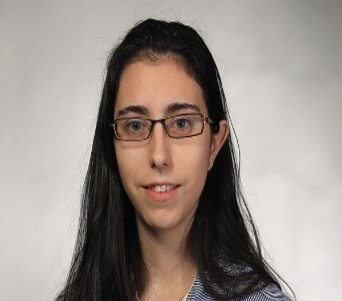 The microbiology department held a three day writing seminar for UAB students and postdoctoral employees on May 14-16, 2018. The purpose of which was to teach graduate students and post‐docs how to effectively communicate science to a lay audience. The department invited Dr. Nicki LeBrasseur, the senior director of scientific communications at DNA Communications to instruct the on and off campus portions of the course. The students were tasked with writing a press release on an assigned paper and were given feedback. Rachel Andrews (Wolshendorf’s lab) participated in the workshop and her article featured below reviews “The roles of SaPI1 proteins gp7 (CpmA) and gp6 (CpmB) in capsid size determination and helper phage interference.” by Damle PK et al.
The microbiology department held a three day writing seminar for UAB students and postdoctoral employees on May 14-16, 2018. The purpose of which was to teach graduate students and post‐docs how to effectively communicate science to a lay audience. The department invited Dr. Nicki LeBrasseur, the senior director of scientific communications at DNA Communications to instruct the on and off campus portions of the course. The students were tasked with writing a press release on an assigned paper and were given feedback. Rachel Andrews (Wolshendorf’s lab) participated in the workshop and her article featured below reviews “The roles of SaPI1 proteins gp7 (CpmA) and gp6 (CpmB) in capsid size determination and helper phage interference.” by Damle PK et al.
Dr. Terje Dokland and colleagues at the University of Alabama at Birmingham recently determined how the bacterium behind MRSA infections, Staphylococcus aureus, transfers disease-related genes from one S. aureus bacterium to another using viruses. Viruses commonly infect bacteria to make more copies of themselves. In doing so, they make viral DNA, fish it out of the sea of bacterial DNA, and package it in new viruses inside the bacteria. This study shows S. aureus uses a protein to force the viruses to take up bacterial DNA instead of viral DNA. This new understanding of gene transfer could be used in the future to help prevent bacteria that cause life-threatening diseases, like MRSA, from forming.
S. aureus is a bacterium that usually causes mild skin infections, but it can become life-threatening when it gains genes from the similar but more dangerous bacterium, MRSA, through a process called horizontal gene transfer. This process is a way for bacteria to swap genes between each other. This can become problematic when harmless bacteria gain genes for antibiotic resistance or the ability to make deadly toxins. While horizontal gene transfer is well studied, scientists do not fully understand how bacteria do this with viruses, which led to Dr. Dokland’s study in S. aureus.
The authors determined S. aureus uses a protein called CpmB to hijack the virus infecting it and forces the virus to transfer bacterial genes instead of viral genes between bacteria. CpmB latches onto viruses within the bacterium, changes their shape, and prevents the viruses from packaging their own DNA. Instead, new copies of S. aureus DNA are packaged into the viruses. These viruses can then go on to infect more S. aureus bacteria, transferring genes from one bacterium to the next.
Despite this finding, this line of research is far from complete. Other proteins are also required for this type of gene transfer, but their roles are unknown. “We are looking to study another protein involved in this process in the future,” says Dr. Dokland. “We think it could be performing the same function as one of the viral proteins.”
While his research continues, Dr. Dokland’s conclusion defines a mechanism for how this type of transfer of harmful genes can occur. If this mechanism is common among many bacteria, this study’s finding could be used to help prevent more deadly bacterial infections from arising in the future.